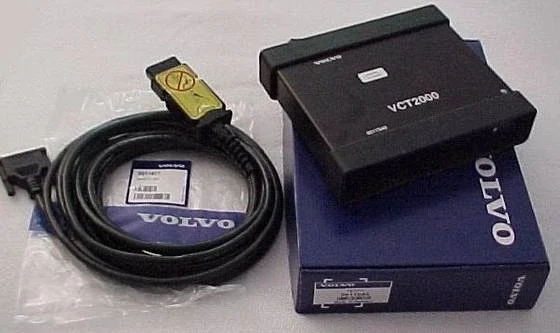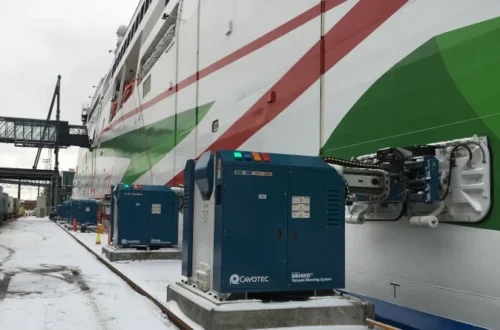What Is a Full Diagnostic Scanner (and Why Volvo Needs Something Special)
Full Diagnostic Scanner That Also Works With Volvo: A full diagnostic scanner (often called a “full-system scanner” or “all-module scanner”) goes far beyond a basic OBD-II code reader. Rather than just reading engine fault codes, it can:
-
Access all vehicle control modules (engine, transmission, ABS, SRS/airbags, body control, climate, infotainment, etc.)
-
Run active tests / bi-directional commands, like actuating valves, motors, or relays
-
Perform special service resets (e.g. oil reset, EPB/electronic parking brake reset, DPF regeneration, battery registration)
-
Read live data and graphs from sensors
-
Generate diagnostic reports and logs
Volvo vehicles, especially newer models, often use proprietary or semi-proprietary systems, gateway modules, secure access to certain modules, and brand-specific error codes. A generic scanner may only read standard engine codes, but not the unique Volvo systems. As many Volvo owners discuss online:
“Normal OBD can grab generic codes, but some codes are Volvo exclusive and you’ll need VIDA and a compatible reader for those.”
Thus, to truly diagnose Volvo systems fully, your scanner needs deeper support (or access to Volvo’s OEM software). A “full diagnostic scanner that works with Volvo” means one that supports Volvo’s module set, possibly with Volvo-specific protocol codes.
Key Features to Look for in a Volvo-Compatible Full Diagnostic Scanner
If you want a scanner that works well with Volvo (now and future models), here are must-have features:
1. Comprehensive Module Coverage & Protocol Support
Your scanner should support all major systems — namely Powertrain (engine, transmission), ABS, Airbags/SRS, Body & Chassis, HVAC, Instrument Cluster, BCM, etc. Also, it should cover Volvo’s proprietary protocols or gateway systems for newer models.
2. Bi-Directional / Active Test Capability
A powerful scanner must allow you to send commands to the vehicle (e.g. open/close valves, retract EPB, cycle injectors). This is often called bi-directional control.
3. Special Functions / Service Resets
Things like oil service reset, electronic parking brake (EPB), DPF regen, battery registration (BMS), steering angle sensor (SAS) calibration, throttle adaptation, etc. These are critical for maintenance beyond fault code reading.
4. Live Data, Graphing, Logging & Reports
You want the ability to view live sensor values, display them graphically, record sessions, export reports (PDF) — all essential for tracking issues over time.
5. Software Updates (Free or Paid)
Volvo introduces new models and modules every year. The scanner must have ongoing software updates to support new modules. Ideally, lifetime free updates are a bonus.
6. Vehicle Identification & Auto VIN Recognition
To save time and prevent errors, the scanner should auto-identify the vehicle via VIN or let you input make/model/year easily.
7. Secure / Gateway Access / Authentication Support
Some newer Volvos have security gateways or module locks that require special authentication or login to access. Your scanner must either bypass or support those schemes.
8. Good Hardware & Connectivity
Solid build, good processor, responsive interface, and options like Bluetooth, WiFi, or wired connection to a tablet/laptop/phone.
Popular Full Diagnostic Scanners That Support Volvo
Here are several scanners (or scanner + software combos) known to work well with Volvo and provide near full system access:
| Scanner / Tool | Volvo Support Highlights | Pros / Weaknesses |
|---|---|---|
| ANCEL VOD700 | It is marketed as a full system OBD2 scanner for Volvo, with all module support (engine, ABS, SRS, transmission, etc.), plus resets for EPB, oil, BMS, etc. | Good mid-level choice. May lack advanced OEM features for very new Volvo models. |
| XTOOL A30M | The A30M claims OE-level full-system diagnostics, bi-directional tests, and supports Volvo among many brands. | Strong candidate: lifetime free updates, active tests, broad coverage. |
| iCarSoft Volvo / Saab Tool | Many Volvo owners choose brand-specific tools like iCarSoft’s Volvo scanner, which support Volvo ABS, SRS, and some advanced codes. | More limited in system scope compared to universal scanners, but cost effective. |
| Launch / Autel / Foxwell / Professional Scanners + Volvo Software | High-end scanners (e.g. Launch, Autel, etc.) combined with Volvo module software can often support deep module access, especially if they support gateway or security authentication. | These tend to be expensive or require additional module unlocking. |
| Volvo OEM / VIDA + DiCE Setup | The official Volvo software, VIDA, used by dealerships. When used with compatible DiCE interfaces (or clones), this provides full OEM-level control over all modules. | Best option for complete access, but expensive and sometimes tricky to license. |
From user forums:
-
Some say lower-cost generic scanners struggle on post-2017 Volvos due to gateway restrictions.
-
Others say that they pair a laptop + software (VIDA / aftermarket) with a compatible interface to get full module access.
So balancing price vs depth is key.
How to Use a Full Diagnostic Scanner with Volvo (Step-by-Step Guide)
To help you get the most from a full scanner on your Volvo, here’s a general workflow:
1. Prepare the Vehicle & Tools
-
Ensure battery is charged (some modules will fail mid-scan if voltage drops)
-
Locate the OBD port (under the dash, left side)
-
Connect your scanner or interface device (wired, Bluetooth, etc.)
-
If using software (VIDA / apps), launch it and ensure it’s updated
2. Vehicle Identification / VIN Read
-
Use the scanner’s auto VIN feature or manually input make/model/year
-
The scanner should fetch the correct modules list
3. Scan / Read Fault Codes Across All Modules
-
Choose “Full System Scan” or “All Modules”
-
Read stored and pending Diagnostic Trouble Codes (DTCs) from each module
-
Note freeze frame data and module statuses
4. Interpret & Cross-Check Codes
-
Use the scanner’s internal description or cross-reference OEM code lists
-
Compare symptoms to the codes (don’t blindly clear)
-
Use live data (temperatures, pressures, flow rates) to confirm
5. Run Active / Bi-Directional Tests & Actuator Commands
-
Where supported, test valves, relays, injectors, fans, solenoids
-
Cycle key components (e.g. open/close EGR valve, move throttle body)
-
This helps you validate whether a part is working or not
6. Perform Special Service Functions / Resets
-
After repairing or replacing parts, perform resets: oil light reset, EPB reset, battery registration, DPF regeneration, etc.
-
Use adaptation or calibration functions like steering sensor (SAS) or throttle adaptation
7. Clear Codes & Re-Scan
-
Clear codes (only after confirming proper repairs)
-
Reboot modules / ignition cycle, then re-scan to ensure codes do not reappear
8. Log & Report
-
Save diagnostic sessions or export reports (PDF, CSV)
-
Record before/after readings and module statuses for future reference
Each scanner tool will have its own UI and menu flow, so always refer to tool documentation for precise steps.
Challenges, Pitfalls & Tips for Diagnosing Volvo Vehicles
While full diagnostic scanners are powerful, working with Volvo systems comes with unique challenges:
Gateway / Security Module Access
Modern Volvo models often use a gateway control module restricting access to certain subsystem modules. For full access, the scanner must support that gateway, sometimes requiring security or login credentials.
Module Updates / Locked Modules
Some modules may be locked, only allowing read or limited write access unless software unlocks. For very new modules, scanner updates may lag.
Firmware / Software Version Compatibility
Volvo may release new protocol versions; if your scanner’s software is outdated, it may fail to communicate with newer ECUs.
Voltage Drop / Power Problems During Scan
During deep diagnostics and active tests, voltage may drop. Always maintain good battery voltage to avoid module resets or failures.
Clear Codes Prematurely – Mistake
Never clear codes before verifying root cause. Clearing too early can hide intermittent issues and make diagnosis harder.
Using Cloned / Unauthorized Interfaces (VIDA clones, etc.)
Some users use unofficial VIDA + clone interfaces. While they can work, they carry risks: software instability, module damage, or license issues.
Interpreting Data vs Reading Descriptions
Scanner descriptions are generic or simplistic; always cross-check with Volvo OEM documentation, tech bulletins, or forums.
Conclusion & Recommendations
If you own a Volvo and want a full diagnostic scanner, aim for one that offers broad module coverage, bi-directional tests, special service resets, live data/graphing, and regular software updates. Tools like the ANCEL VOD700 and XTOOL A30M are solid picks, especially for independent shops or DIYers. For full OEM access, VIDA + DiCE (or compatible interface) remains the gold standard.
Before purchasing, check your specific Volvo model/year and see if the scanner lists support for it. Also, verify if users of that same model have successfully used the tool (via forums, reviews). Once you have the scanner, use it carefully — scan first, test, repair, then reset, and always back up your diagnostic logs.





